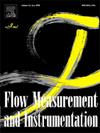用于翼型湍流分离控制的DBD等离子体驱动器特性多目标优化
IF 2.3
3区 工程技术
Q2 ENGINEERING, MECHANICAL
引用次数: 0
摘要
研究了有效控制高雷诺数翼型周围湍流分离的等离子体作动器的最佳特性。选择致动器在翼型上的位置及其电压作为可变参数。采用遗传算法进行多目标优化,以最大气动效率和最小功耗为目标函数。利用电流体动力学(EHD)场的Maxwell方程和Reynolds平均Navier-Stokes方程,通过Suzen模型对等离子体作动器对流动的影响进行了数值模拟。提出了一种自动调整执行器位置、自动生成网格、自动分析100万雷诺数流场的算法。详细的分析结果表明,执行器的位置显着影响气动效率,取决于翼型类型和电压施加到执行器。在NACA0012和NACA4412两种厚度相近的翼型上,进行了等离子体作动器的分离控制研究。结果表明,对称型翼型的最佳执行器位置在前缘,而弧形翼型(NACA4412)的最佳执行器位置在翼型中部附近。此外,增加超过特定阈值的电压会导致阻力系数上升,从而降低气动效率。优化分析最终表明,NACA0012和NACA4412翼型的气动效率在不同电压水平下均达到峰值,分别为18 kV和21-22 kV。本文章由计算机程序翻译,如有差异,请以英文原文为准。
Multi-objective optimization of DBD plasma actuator characteristics for turbulent flow separation control over airfoils
The optimal characteristics of a plasma actuator for effective control of high Reynolds number turbulent flow separation around airfoils are investigated. The actuator position on the airfoil and its voltage are chosen as variable parameters. A multi-objective optimization using a Genetic Algorithm is used with two objective functions of maximizing aerodynamic efficiency and minimizing power consumption. The numerical simulation of the plasma actuator effect on the flow is carried out using Maxwell equations for the electro-hydrodynamic (EHD) field coupled with Reynolds Averaged Navier-Stokes equations through the Suzen model. An algorithm is developed to automatically adjust the actuator position, generate the mesh, and analyze the flow for a Reynolds number of one million. A detailed analysis of the results revealed that the actuator position significantly impacts aerodynamic efficiency, depending on the airfoil type and voltage applied to the actuator. Further study is carried out to investigate the separation control by plasma actuator over two airfoils with similar thicknesses, i.e., NACA0012 and NACA4412. Results indicated that the optimal actuator position for the symmetric airfoil is the leading edge, while that of the cambered airfoil (NACA4412) is near the middle of the airfoil. Furthermore, increasing the voltage beyond a specific threshold results in a rise in the drag coefficient, thereby diminishing the aerodynamic efficiency. The optimization analysis ultimately demonstrated that the peak aerodynamic efficiency for NACA0012 and NACA4412 airfoils is achieved at distinct voltage levels, specifically 18 kV and 21–22 kV, respectively.
求助全文
通过发布文献求助,成功后即可免费获取论文全文。
去求助
来源期刊

Flow Measurement and Instrumentation
工程技术-工程:机械
CiteScore
4.30
自引率
13.60%
发文量
123
审稿时长
6 months
期刊介绍:
Flow Measurement and Instrumentation is dedicated to disseminating the latest research results on all aspects of flow measurement, in both closed conduits and open channels. The design of flow measurement systems involves a wide variety of multidisciplinary activities including modelling the flow sensor, the fluid flow and the sensor/fluid interactions through the use of computation techniques; the development of advanced transducer systems and their associated signal processing and the laboratory and field assessment of the overall system under ideal and disturbed conditions.
FMI is the essential forum for critical information exchange, and contributions are particularly encouraged in the following areas of interest:
Modelling: the application of mathematical and computational modelling to the interaction of fluid dynamics with flowmeters, including flowmeter behaviour, improved flowmeter design and installation problems. Application of CAD/CAE techniques to flowmeter modelling are eligible.
Design and development: the detailed design of the flowmeter head and/or signal processing aspects of novel flowmeters. Emphasis is given to papers identifying new sensor configurations, multisensor flow measurement systems, non-intrusive flow metering techniques and the application of microelectronic techniques in smart or intelligent systems.
Calibration techniques: including descriptions of new or existing calibration facilities and techniques, calibration data from different flowmeter types, and calibration intercomparison data from different laboratories.
Installation effect data: dealing with the effects of non-ideal flow conditions on flowmeters. Papers combining a theoretical understanding of flowmeter behaviour with experimental work are particularly welcome.
 求助内容:
求助内容: 应助结果提醒方式:
应助结果提醒方式:


